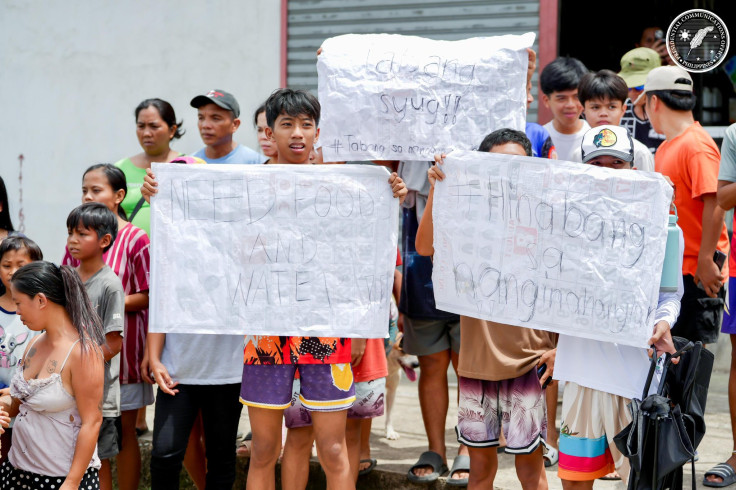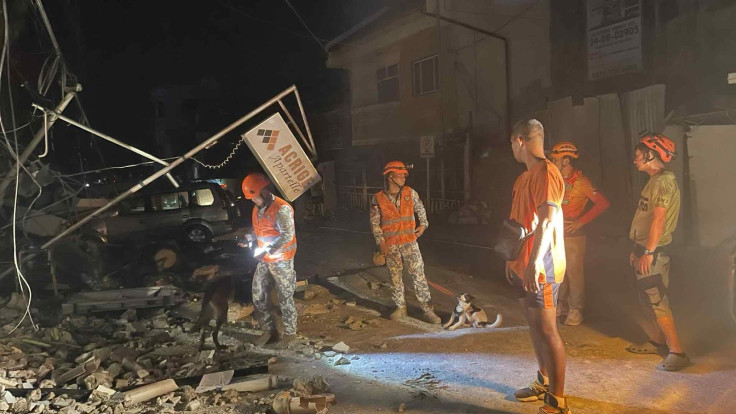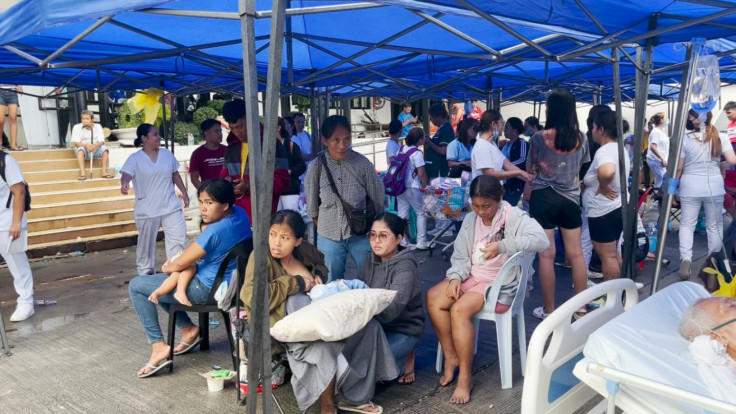Triple Threat Disaster: Deadly 6.9 Earthquake, Volcanic Eruption, and Now Typhoon Paolo Set to Batter the Philippines
The Philippines is reeling from a 6.9 magnitude earthquake that killed 72 and an eruption. Now, Tropical Storm Paolo is set to hit.

The Philippines, located on the seismically active Pacific Ring of Fire, is brutally familiar with natural disasters. However, the tremor that struck on Tuesday, September 30, has proven to be the most lethal the nation has encountered since at least 2013.
A massive 6.9-magnitude earthquake occurred shortly before 10 p.m. local time (3:00 p.m. BST), as reported by Philippine seismologists, off the coast of Bogo City (population 90,000) in the island province of Cebu, located in the central region of the archipelagic Southeast Asian nation. Compounding the crisis, a minor volcanic eruption followed, and now a typhoon is set to batter the region—a devastating trifecta of natural fury.
Catastrophic Impact: Buildings Collapse and Fatalities Rise
The scale of the destruction has been immense, driven by the earthquake's shallow depth.
The earthquake's epicentre was superficial, around 5 km beneath the surface, indicating that its energy had to traverse a shorter distance before impacting infrastructure. The earthquake energy was sufficiently powerful to induce the collapse of structures, including a century-old church, and to create fissures in bridges.

- Human Toll: National disaster officials confirmed a minimum of 72 fatalities and 294 injuries resulting from the earthquake, although the official toll may rise in the forthcoming days.
- Mass Casualties: In one impacted town, the earthquake caused a section of a sports complex to collapse onto fans attending a basketball game. A community in Bogo City recorded approximately 10 casualties, despite consisting of 'disaster resilient homes' that sheltered survivors of a catastrophic supertyphoon in 2013.
- Search and Rescue: Civil defence official Bernardo Rafaelito Alejandro IV stated at a news conference in Manila on Wednesday that the nation remains 'in the golden hour of our search and rescue,' noting that there are 'numerous reports of individuals who were trapped or struck by debris.' By Thursday afternoon, the national police reported that all missing persons had been located.
- Tsunami Alert: A tsunami alert was issued for multiple places in the Philippines, but it has now been rescinded as of Thursday.
hello, everyone. posting this just in case some still don't know. last night, cebu and other nearby provinces were hit by a very strong 6.9-magnitude earthquake.
— jane 𓂃˖ ִֶָ ☁️་༘ (@tkookreads) October 1, 2025
northern cebu, in particular, is in dire need of help.pic.twitter.com/axwFuJDqZs
No Correlation: Earthquake and Taal Volcano Eruption
Following the magnitude 6.9 earthquake that hit Bogo City, Cebu at 9:59 p.m. on Tuesday, a minor phreatomagmatic eruption in Taal Volcano Island's Main Crater, meanwhile, was logged at 2:02 a.m. on Wednesday.
However, the Philippine Institute of Volcanology and Seismology (PHIVOLCS) stated that there is no correlation between the earthquake in Cebu province on Tuesday evening and the modest eruption of Taal Volcano in Batangas on Wednesday morning. Dr. Teresito Bacolcol, director of PHIVOLCS, stated in an interview with GMA Integrated News' Unang Balita that the earthquake in Cebu is not related to the eruption of Taal Volcano.
LOOK: A minor phreatomagmatic eruption from Taal Volcano Island's Main Crater at 02:02 AM today, 01 October 2025 was captured by the thermal camera at Taal Volcano Observatory (TVO) and IP Camera at the Main Crater Observation station (VTMC). The event produced a 2500-meter-high… pic.twitter.com/AYZsg2qXPV
— PHIVOLCS-DOST (@phivolcs_dost) September 30, 2025
Impending Doom: Tropical Storm Paolo
Now, just days after the massive earthquake and the volcanic eruption, a typhoon is set to batter the Philippines this weekend. Tropical Depression Paolo escalated into a tropical storm in the early hours of Thursday, October 2, with maximum sustained winds rising from 55 kilometres per hour to 65 km/h. The gustiness has increased to 80 km/h from 70 km/h, according to the Philippine Atmospheric, Geophysical, and Astronomical Services Administration (PAGASA).
- Naming: Paolo was assigned the international designation Matmo, a name provided by the United States, signifying "heavy rain" in the Chamorro language of Guam.
- Trajectory: As of 4 AM on Thursday, the tropical storm was last observed 705 kilometres east of Infanta, Quezon. It is travelling west-northwest at a velocity of 20 km/h.
- Threat: Paolo may intensify into a strong tropical storm by early Friday morning, October 3, before making landfall in Isabela or Aurora that same morning. PAGASA noted that Paolo may attain typhoon strength before making landfall, however this is more probable after it has traversed Northern Luzon and re-emerged over the West Philippine Sea on Friday afternoon. PAGASA emphasised that a southward deviation in Paolo's trajectory remains feasible, contingent upon the intensity of the high-pressure system above it.

The Philippines is now facing a devastating series of natural calamities: reeling from the deadliest earthquake since 2013, dealing with an official death toll of at least 72, and still recovering from a minor volcanic eruption, the nation must now brace for the arrival of Tropical Storm Paolo.
As search and rescue operations wind down and the country looks to rebuild amidst the threat of heavy rain and wind, the need for immediate disaster relief is critical. How can the international community best support the Philippines as it faces this devastating triple threat?
© Copyright IBTimes 2025. All rights reserved.




















